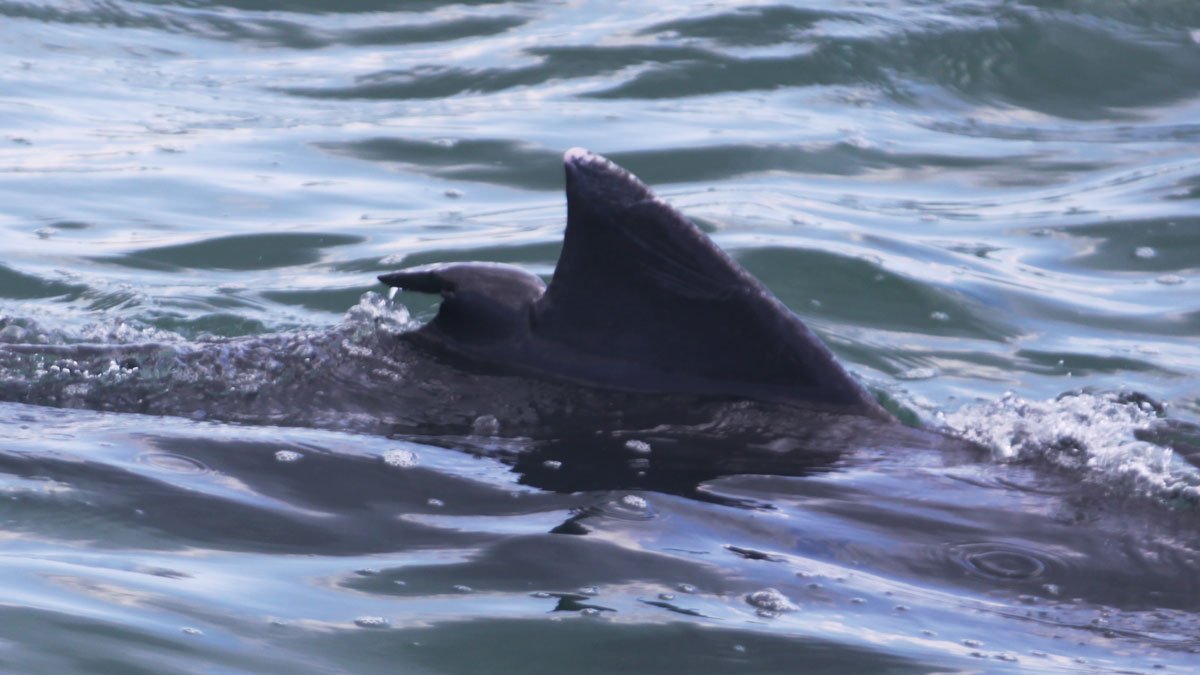

The use of live baits with very light tackle fished close to the boat results is numerous leaping strikes and a high level of angler involvement. Using live baits we consistently catch 30 lbs. Beginning in October and running through mid-December the big kings show up in numbers.

For serious king mackerel fishing it is the fall fishing that is good. We have a spring run of kings, summer kings and our fall smoker kings. We catch them year round with some excellent winter fishing. The past several years have seen record numbers of sailfish. They certainly add excitement to our late summer action. They are great fighters and I have always found it interesting that they tend to be in the same places as wahoo. Again, this is a catch-and-release fish with a minimum size limit of 57 in. Our best sailfishing is usually in July, August and September. However, recently we have seen a big rebound in the white marlin population. Recent years have seen catches drop significantly, a fact that is causing great concern for all of us who fish. We typically catch them from April thru October with the best month in Hatteras normally being July. Almost all are released and the minimum size that can be boated is 66 in. they can be caught on relatively light tackle and are great sport. With most fish weighing between 40 to 60 lbs. These are the acrobats of the billfish world. They have been caught here literally every month of the year, however, the best of our fishing is during the summer months with May, June and July being our most consistent times. Catching a blue marlin is a bit like hunting that big buck – you do not get him on every hunt. Coupled with the fact that almost all large marlins are female it is exceedingly rare to see one brought to the docks these days. Blue marlin are special! This is basically a catch-and-release fish because only large ones (greater than 99 in. The fastest fish in the ocean!!! Blue marlin are THE prize big-game fish caught off Hatteras, for no other fish has such a combination of size, speed and spectacular leaping ability. THEY ARE ALSO THE MOST DANGEROUS FISH WE CATCH, WITH MORE INJURIES SUSTAINED FROM THEIR RAZOR-SHARP TEETH THAN ALL OTHER FISH INFLICTED INJURIES COMBINED. I consider them to have the most dramatic coloration of any fish when they first emerge from the water. The have firm white flesh and are exceptional table fare. Usually they are solitary travelers and more than two or three on any given day is considered to be quite good. They are present all year round with mid-July through September probably being the most consistent time to catch them.

#BLUE FIN DOLPHIN FISH PLUS#
GoodĮverybody loves a Wahoo! Twenty pounders are the norm but there are a lot of 30 lbs plus fish caught. There is a limit of three fish per person and in the spring and fall that limit is often reached. some days you catch them and some days you do not. In the summer months we encounter them on virtually every trip but the bite is inconsistent – i.e. Our best months are March, April, May, November and December when they seem to bite more readily.

It can be cooked in many different ways and freezes better than any other fish we catch. Dolphin is the most versatile table fare of any fish I know. We are limited to 60 fish per boat per day and most boats catch their limit on a very regular basis. From early June onward we have lots and lots of school dolphin with most fish ranging from 2 to 5 lbs. However, they are much more common in May and June. Large dolphin will probably be encountered on any trip taken out of Hatteras during this time frame. appear and plentiful through early October when they become less willing to school up and also become more boat shy. The best of the action is from early May when the gaffers (any dolphin which needs to be gaffed in order to boat it) ranging up to 50 plus lbs. Hatteras dolphin (mahi-mahi) fishing is probably the best dolphin fishing to be found anywhere! From Mid-April though late October they are caught with high regularity. Depending on the time of year you are likely to encounter outstanding fishing for many different types of fish. What this does is to provide us with fish from both directions and, as the seasons change, the species of fish change. Cape Hatteras also marks the area where the last of the waters of the cool Labrador Current collides with the warm waters of the Gulf Stream as it begins its eastward turn toward Europe. Hatteras has the geographical good fortune to be located closer to the Gulf Stream than any point in the US north of Stuart, Florida.


 0 kommentar(er)
0 kommentar(er)
